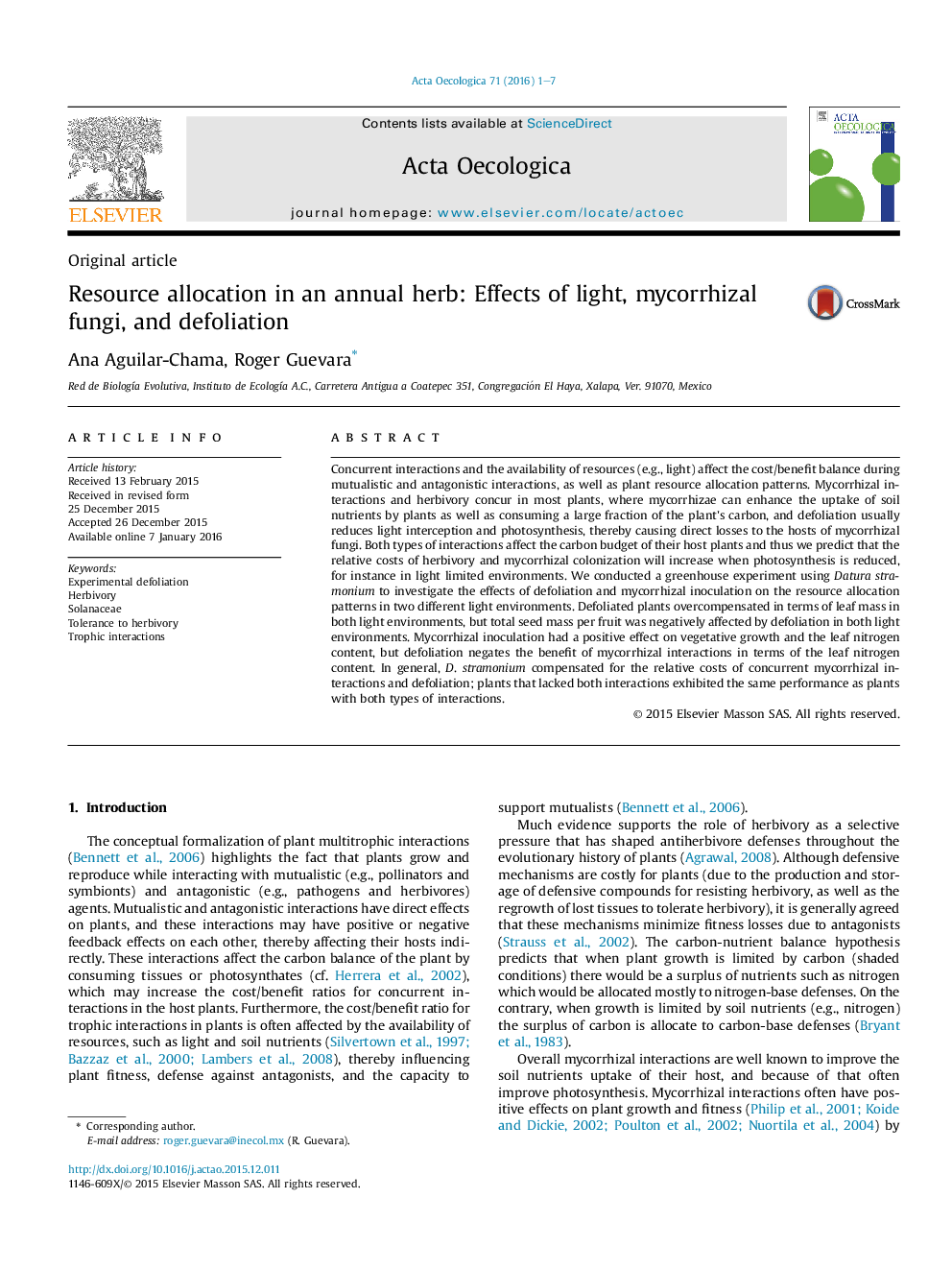| کد مقاله | کد نشریه | سال انتشار | مقاله انگلیسی | نسخه تمام متن |
|---|---|---|---|---|
| 4380729 | 1617701 | 2016 | 7 صفحه PDF | دانلود رایگان |
• Datura stramonium overcompensates in leaf mass following 50% defoliation.
• D. stramonium tolerates concurrent defoliation and mycorrhizal colonization.
• D. stramonium gains from mycorrhizal interactions only in light rich environments.
Concurrent interactions and the availability of resources (e.g., light) affect the cost/benefit balance during mutualistic and antagonistic interactions, as well as plant resource allocation patterns. Mycorrhizal interactions and herbivory concur in most plants, where mycorrhizae can enhance the uptake of soil nutrients by plants as well as consuming a large fraction of the plant's carbon, and defoliation usually reduces light interception and photosynthesis, thereby causing direct losses to the hosts of mycorrhizal fungi. Both types of interactions affect the carbon budget of their host plants and thus we predict that the relative costs of herbivory and mycorrhizal colonization will increase when photosynthesis is reduced, for instance in light limited environments. We conducted a greenhouse experiment using Datura stramonium to investigate the effects of defoliation and mycorrhizal inoculation on the resource allocation patterns in two different light environments. Defoliated plants overcompensated in terms of leaf mass in both light environments, but total seed mass per fruit was negatively affected by defoliation in both light environments. Mycorrhizal inoculation had a positive effect on vegetative growth and the leaf nitrogen content, but defoliation negates the benefit of mycorrhizal interactions in terms of the leaf nitrogen content. In general, D. stramonium compensated for the relative costs of concurrent mycorrhizal interactions and defoliation; plants that lacked both interactions exhibited the same performance as plants with both types of interactions.
Journal: Acta Oecologica - Volume 71, February 2016, Pages 1–7
